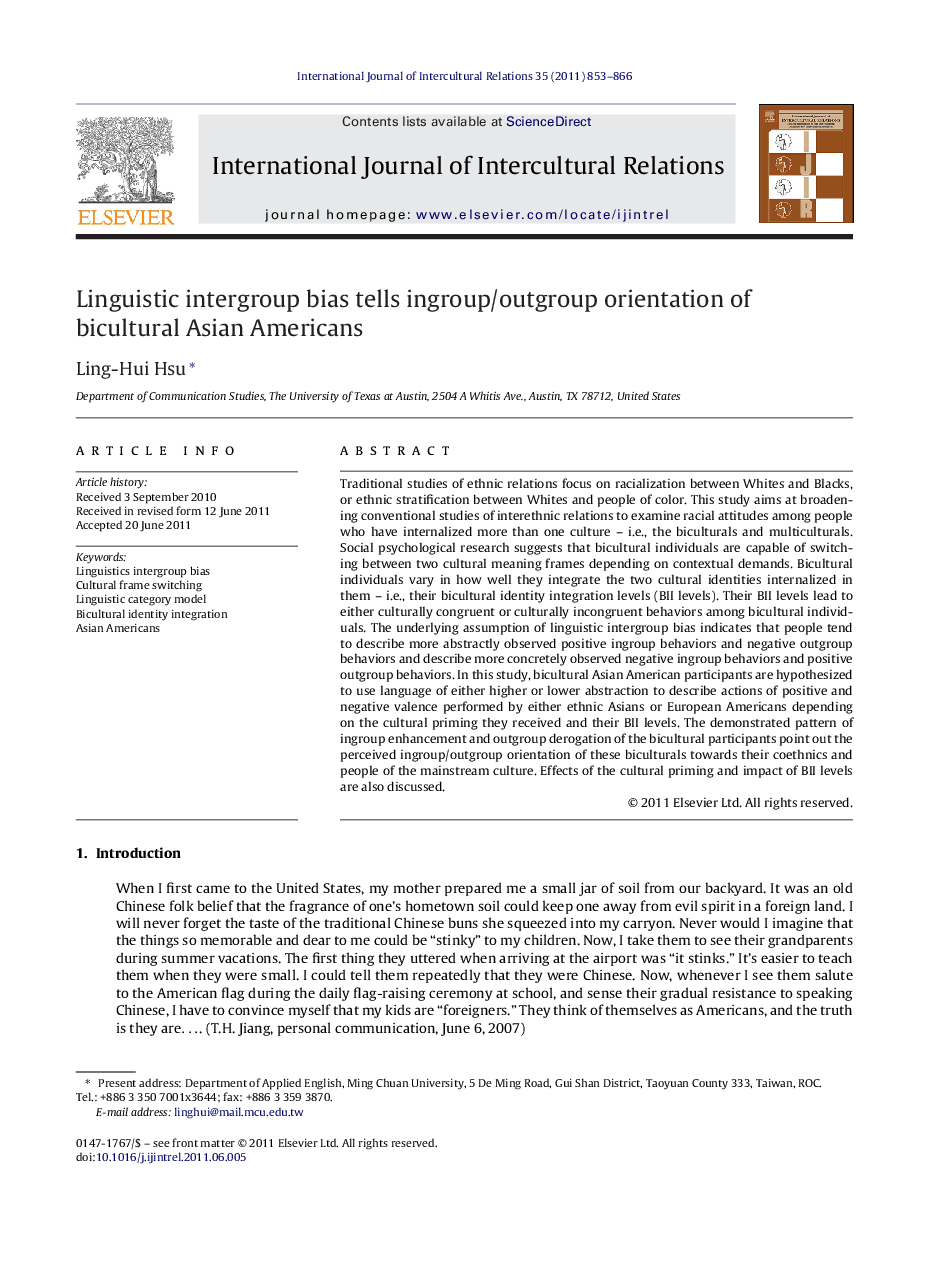| Article ID | Journal | Published Year | Pages | File Type |
|---|---|---|---|---|
| 947254 | International Journal of Intercultural Relations | 2011 | 14 Pages |
Traditional studies of ethnic relations focus on racialization between Whites and Blacks, or ethnic stratification between Whites and people of color. This study aims at broadening conventional studies of interethnic relations to examine racial attitudes among people who have internalized more than one culture – i.e., the biculturals and multiculturals. Social psychological research suggests that bicultural individuals are capable of switching between two cultural meaning frames depending on contextual demands. Bicultural individuals vary in how well they integrate the two cultural identities internalized in them – i.e., their bicultural identity integration levels (BII levels). Their BII levels lead to either culturally congruent or culturally incongruent behaviors among bicultural individuals. The underlying assumption of linguistic intergroup bias indicates that people tend to describe more abstractly observed positive ingroup behaviors and negative outgroup behaviors and describe more concretely observed negative ingroup behaviors and positive outgroup behaviors. In this study, bicultural Asian American participants are hypothesized to use language of either higher or lower abstraction to describe actions of positive and negative valence performed by either ethnic Asians or European Americans depending on the cultural priming they received and their BII levels. The demonstrated pattern of ingroup enhancement and outgroup derogation of the bicultural participants point out the perceived ingroup/outgroup orientation of these biculturals towards their coethnics and people of the mainstream culture. Effects of the cultural priming and impact of BII levels are also discussed.
► The study uses cultural icons to activate participants’ cultural identities. ► Behavioral illustrations of real people are used as stimuli to test LIB. ► Differences in participants’ LIB indicate the impact of BII and CFS. ► Participants describe more abstractly positive behaviors of ethnic Asians. ► Results show Asian American biculturals see ethnic Asians as an ingroup.
